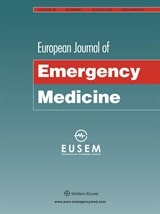Effect of oxygen therapy on myocardial salvage in ST elevation myocardial infarction: The randomized SOCCER trial

Objective
Recent studies suggest that administration of O2 in patients with acute myocardial infarction may have negative effects. With the use of cardiac MRI (CMR), we evaluated the effects of supplemental O2 in patients with ST elevation myocardial infarction (STEMI) accepted for acute percutaneous coronary intervention (PCI).Materials and methods
This study was a randomized-controlled trial conducted at two university hospitals in Sweden. Normoxic STEMI patients were randomized in the ambulance to either supplemental O2 (10 l/min) or room air until the conclusion of the PCI. CMR was performed 2–6 days after the inclusion. The primary endpoint was the myocardial salvage index assessed by CMR. The secondary endpoints included infarct size and myocardium at risk.Results
At inclusion, the O2 (n=46) and air (n=49) patient groups had similar patient characteristics. There were no significant differences in myocardial salvage index [53.9±25.1 vs. 49.3±24.0%; 95% confidence interval (CI): −5.4 to 14.6], myocardium at risk (31.9±10.0% of the left ventricle in the O2 group vs. 30.0±11.8% in the air group; 95% CI: −2.6 to 6.3), or infarct size (15.6±10.4% of the left ventricle vs. 16.0±11.0%; 95% CI: −4.7 to 4.1).Conclusion
In STEMI patients undergoing acute PCI, we found no effect of high-flow oxygen compared with room air on the size of ischemia before PCI, myocardial salvage, or the resulting infarct size. These results support the safety of withholding supplemental oxygen in normoxic STEMI patients.
Ardavan Khoshnood, Marcus Carlsson, Mahin Akbarzadeh, Pallonji Bhiladvala, Anders Roijer, David Norlund, Peter Höglund, David Zughaft, Lizbet Todorova, Arash Mokhtari, Håkan Arheden, David Erlinge, Ulf Ekelund
2018
European Journal of Emergency Medicine, 25(2):78–84
